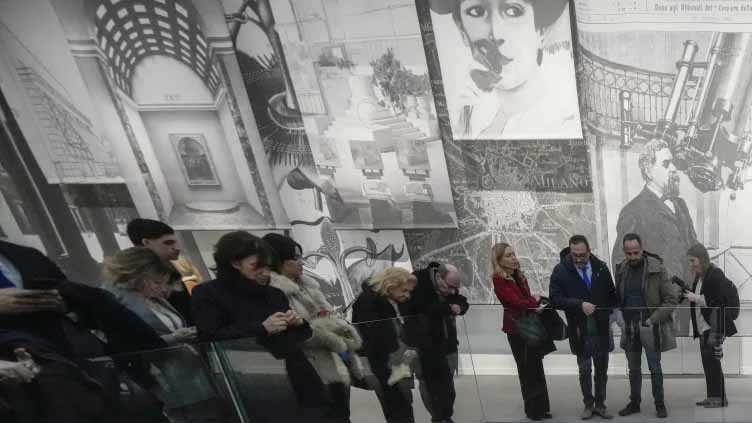Milan's Brera boosts its cultural cachet with an overdue modern art wing and Leonardo's Last Supper

Entertainment
The accelerated timeline after decades of delays “wasn’t to prove something,” Crespi told AP
MILAN (AP) — Milan’s Pinacoteca di Brera museum, conceived under Napoleon as a “little Louvre,” is finally getting a modern art addition first envisioned more than 50 years ago with the opening Sunday of Palazzo Citterio, home to one of the world’s most important collections of 20th century Italian art.
Completing the project long beset by shifting priorities, periods of neglect and most recently an ill-fated architectural vision was a priority for Brera director Angelo Crespi when he took over in January.
Italy’s then-culture minister set Dec. 7 — the feast day for Milan’s patron St. Ambrose — as the target opening date, giving Crespi just months to resolve structural issues and oversee the installation of hundreds of modern works of art donated to the Brera decades ago.
On deadline, the current culture minister, Alessandro Giuli, who inherited the project in September, inaugurated Palazzo Citterio on Saturday’s feast day, ahead of the public opening on Sunday.
The accelerated timeline after decades of delays “wasn’t to prove something,” Crespi told The Associated Press.
“There was awareness that it needed to be opened,” he said. “The question was not just economic, but also ethical. After 52 years, we couldn’t keep such a beautiful building closed simply because of inertia.”
The Palazzo Citterio opening completes a decades-old vision for a “Grande Brera,” which encompasses also the Pinacoteca and the Braidense National Library, just as it takes on greater heft in the Italian cultural landscape.
From Dec. 2, the Grande Brera also incorporated into its fold Leonardo da Vinci’s “Last Supper,” arguably Italy’s most famous masterpiece. The fragile wall mural is located in a church complex a kilometer (half a mile) away from the Pinacoteca and Palazzo Citterio.
The merger creates a system of state-run museums in Milan that boosts Brera’s cachet and gives Crespi significant autonomy in their management, including control over 80% of revenue.
Combined, the “Last Supper,” and the Pinacoteca di Brera, receive 1 million visitors a year, and take in more than 10 million euros ($10.5 million) in revenue, Crespi said. As a single entity, they are among the top 10 most-visited sites in Italy.
Crespi hopes to use this greater visibility to promote other institutes in the Brera complex, including the Academy of Fine Arts, botanical gardens and an observatory, while also pitching Milan — better known for fashion and finance — as a city of the arts.
Beside the Grande Brera’s vast collections and the “Last Supper,” masterpieces by Michelangelo, Canova, Caravaggio, Raffaello, Bellini, Piero della Francesca and others are displayed in museums and landmarks within walking distance of Milan’s central Duomo cathedral. Yet they are often overlooked by visitors.
“All of the biggest masterpieces and names who made Italian art great over the centuries are concentrated within a few hundred meters,” Crespi said, adding that as an art city, Milan can rival Florence, Rome and Venice.
The Grande Brera should become “the motor of this narration of Milan as a city of art,” he said.



